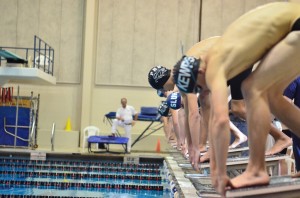
The Worker as an Athlete
Written By: Korey Jay, BSc DC
With few exceptions, most of us have enjoyed the thrill of playing sports at some point or other during our youth. A seemingly endless run of practice, game and repeat as we forced our tired (and no doubt bored) parents to ferry us from one field or rink to the next to compete against our peers. A youth spent dreaming of competing on the largest stages, and pushing our bodies to their absolute peak, was the norm for legions of kids around the country.
Unfortunately, most of us realized at some point or other that perhaps we were not going to make the jump into the big leagues. While there is no shame in this, as in retrospect the odds really were against us (even if as we age we somehow were better at sports in our memory), there is a great deal of shame in stopping that love of physical fitness and health.
It seems that we package certain activities, such as exercise and stretching, as well as certain injuries such as strains and sprains, into the realm of the athlete. The purpose of this article is to relate the truth that injuries and concepts we all assume are athletic in nature are actually present in the “real world” of the work-force.
Rotator cuff (shoulder) strains, tennis elbow, golfer’s elbow, all repetitive use injuries afflicting athletes competing in a variety of sports. However, as most industrial jobs involve repetitive tasks performed at waist to shoulder height, and with multiple dexterous movements of the hands, these are injuries that afflict those of us in the workforce as well. The difference is that athletes know to stretch and exercise their muscle and joint complexes in an attempt to prevent such injuries. The worker rarely does the same, and unfortunately very few of us can ask our employers for a “pitch count”. Thus it becomes vital to approach our jobs as sports, which requires training and exercise and treatment when injuries occur.
Most athletes realize that their respective sports tend to involve unbalanced actions and stresses placed upon their bodies. For instance, the star pitcher has an inherent knowledge that he or she performs strong ballistic movements with one arm while the other arm remains more or less inactive during a game, which averages 3 ½ hours. The athlete realizes, however, that he or she must strive for a balanced musculature in order to facilitate overall health and increase performance and endurance.
What of the worker? Truckers log long hours in one position, with an inert core musculature, while shifting gears with the right arms and shoulder and pressing the clutch using the left calf and ankle. Office workers constantly maneuver a mouse around using one hand for hours at a time. Those individuals in construction swing a hammer with one arm all day long. These represent far longer periods of time than the star pitcher, in which the worker is subject to repetitive micro-trauma, which builds and builds over the years. Yet the worker does not expend the same effort in maintaining a balanced and healthy body to withstand the demands placed upon their bodies.
In our capacity as Chiropractors, my family and myself have had extensive experience in treating high-level athletes as well as member of the workforce. The common thread is that the structures affected, and the injuries sustained tend to be similar in all cases (barring major injury of course) The difference, however, is that the athlete in general is more in tune with his/her body and has a drive to maintain a proper balance in healthcare and wellness situations.
If nothing else, we should all strive to become more in tune with what our bodies are telling us as well as training our bodies to withstand the rigours of our careers. While we may not all be elite athletes, we can all approach our jobs with an athlete’s mindset in order to avoid injuries and sustain a healthy and productive work life.
Photo Credits: Jim Erlinger
 Did you like this article? Please consider
Did you like this article? Please consider  96 Queen Street
96 Queen Street
Leave a Reply